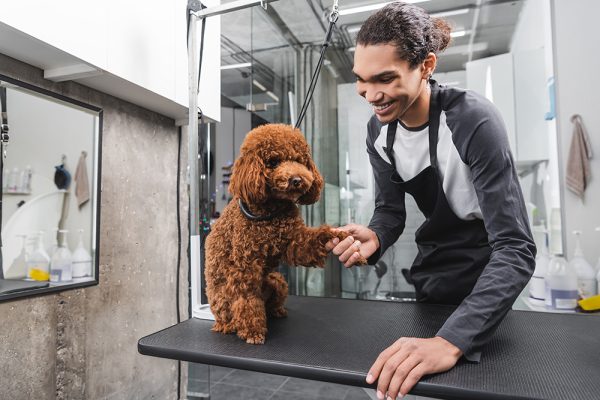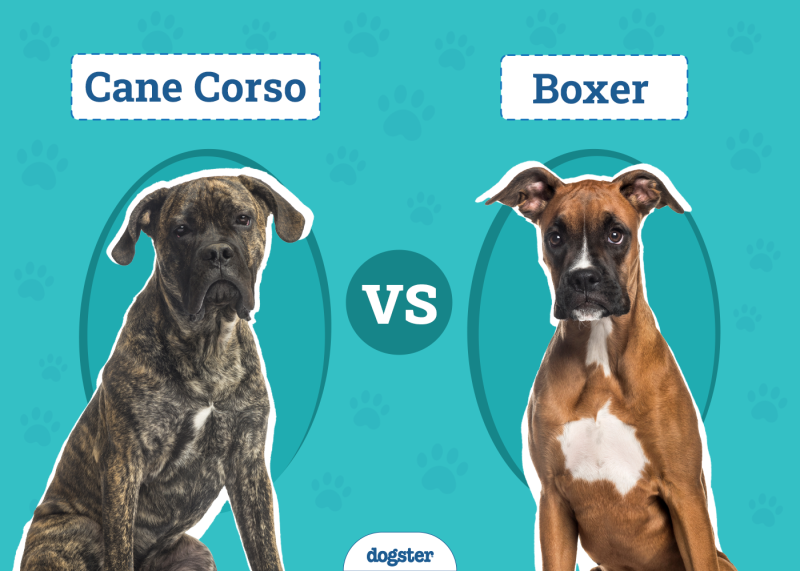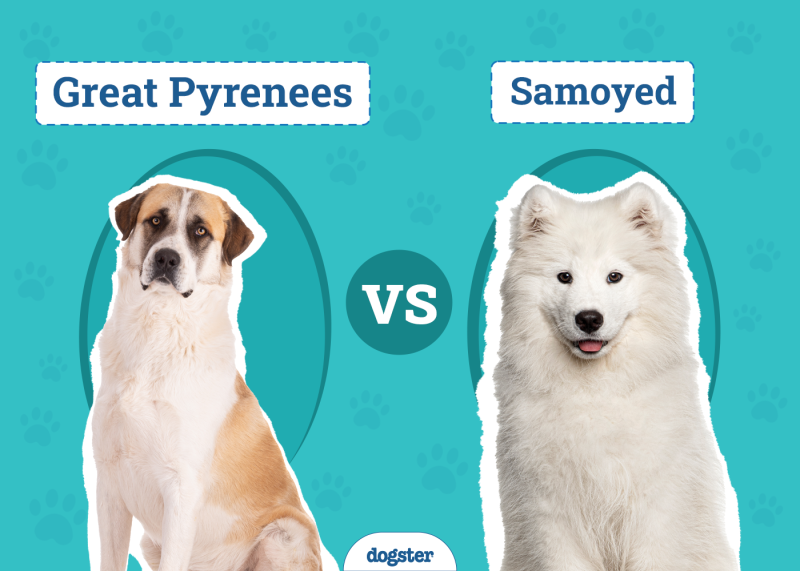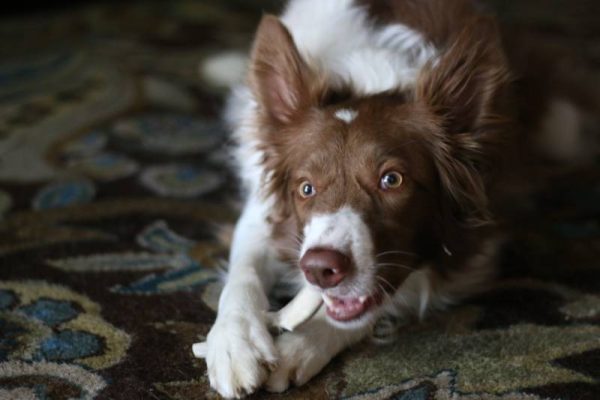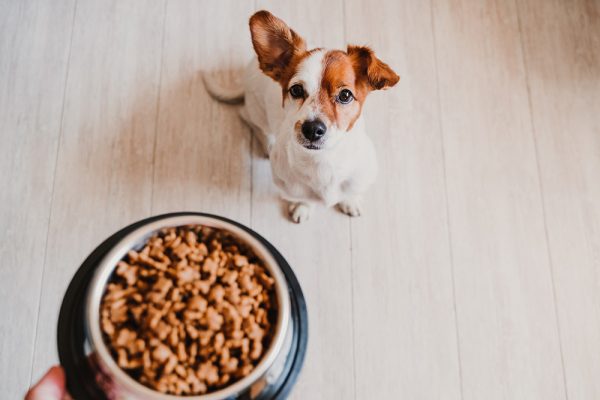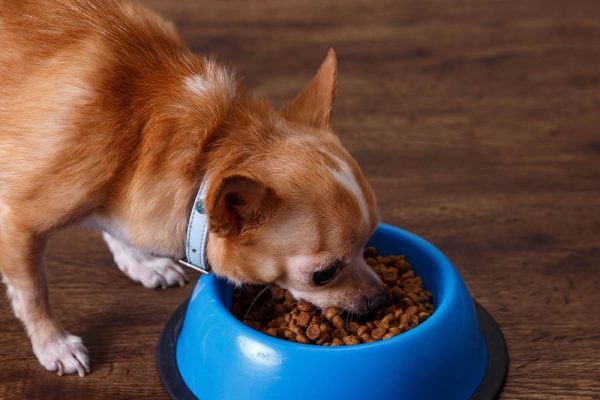From the extra snuggles you receive at the end of the day to the constant companionship your pets enjoy, owning multiple dogs brings myriad benefits to everyone in the house. But training is one area that gets exponentially more difficult with every additional dog.
Getting one dog to pay attention and learn can be challenging enough, so you can bet maintaining the focus of more than one can feel impossible. If you’re trying to get everyone on the same page in your multi-dog household, we’ll break down six steps to train two dogs at once.

The 6 Tips on How to Train Two Dogs at Once
Training multiple dogs takes a patient approach, and it has some specific challenges, too. Techniques like clicker training are difficult to implement if you’ve got two dogs doing different things! Additionally, whether you’re dealing with littermates or two pups of a similar age, you are usually trying to train and socialize them at the same time that they are working out who’s going to be on top in their little hierarchy.
Alongside the everyday commands and habits you’re trying to teach, you’ll also have to build an understanding between the dogs regarding when you are addressing them individually and together.
1. Train Your Dogs Individually
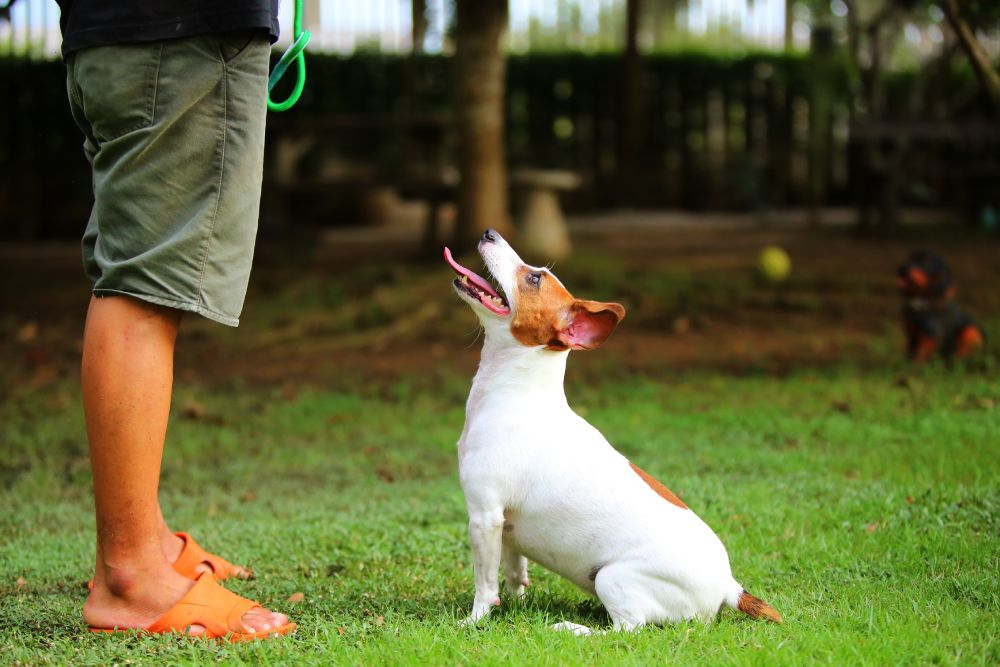
Dogs need to develop basic obedience behavior if you want them to cooperate in a group. Yet, working with multiple dogs from scratch will confuse your pets and frustrate you. When they’re learning the essential commands, you’ll have to separate them and train each dog individually.
When training two dogs at once, place one in a crate or separate room while you train the other. Provide enrichment to the non-training dog, like puzzle feeders or chews, to keep them entertained until it’s their turn. Train basic behaviors, including sit, stay, place, and recall, in a one-on-one method to give them your undivided attention.
You can keep the training sessions short to maintain your dogs’ focus and interest. Working with one dog at a time will let you address each pet’s unique needs and work at their pace. Even after you become comfortable working with your dogs in a group, individual training will reinforce the lessons and your bond.
2. Walk Your Dogs Individually
Walking your dogs and enforcing proper social behaviors is a unique training discipline all in itself, so you should approach these individually at first. Training your dogs to heel, check in with you, and come when called is far easier when you can do it without the distraction of another canine. Even if you have limited time and have to give both of your dogs shorter walks, taking them out one at a time will speed up their learning.
3. Teach Their Individual Names
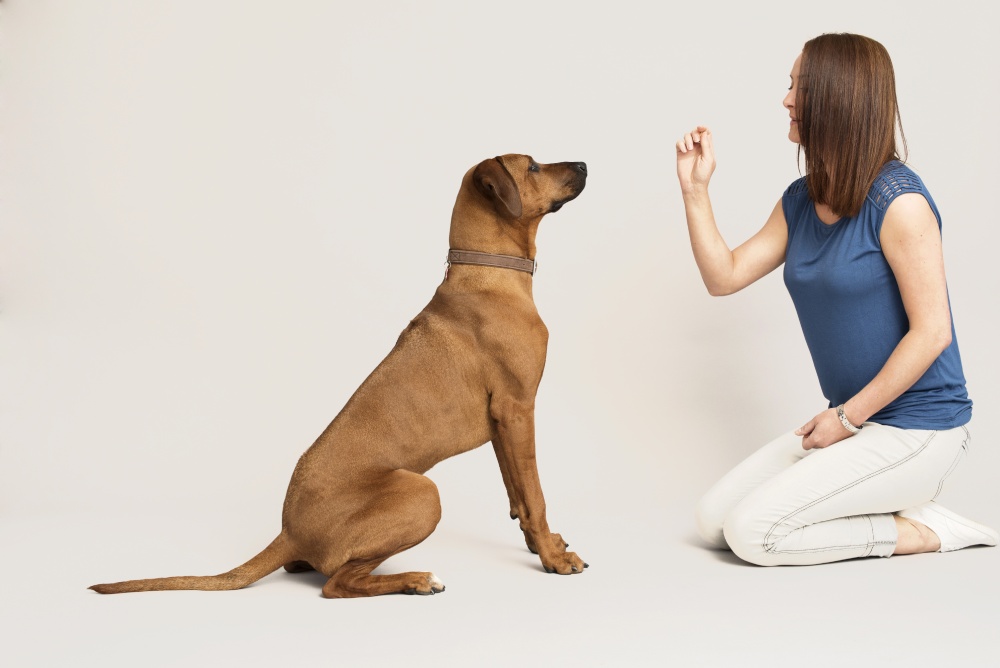
The goal of training two dogs is to guide one without getting undue attention from the other. How can you ensure your dogs know who you’re talking to when you’re training similar commands?
You don’t always need both dogs doing the same action at once, but you also don’t want to worry about teaching each dog a unique command for every behavior. Teaching your pets’ names is the easiest way to get the right dog to listen. You can make positive associations with their names, rewarding them when they react to you calling them.
Once your dogs recognize their names and respond reliably, you can start to do a little bit of training with them together. For example, if you need a dog to sit, you can say, “Joey, sit.” With consistency, your dogs will see you’re talking to only one of them, especially when you use non-verbal cues, like looking at them, to show where you’re directing your attention.
4. Train a Group Name
Teaching names will help you transition from one-on-one training to training individuals within a group setting. But sometimes, you’ll want to address the entire group. If you’re at the dog park with your pets and need them to return so you can leave, having a single group call is far more efficient than yelling for each dog by name.
Training a group name is relatively easy. It starts with picking one, like “boys” or “gang,” and ends with teaching the name to each dog as a second name, using the same reward system to create a positive connection to it.
You can train the name with each dog by themselves. Then, you can reinforce it by bringing your dogs together, saying the group name, and rewarding each one with a tasty treat when they give you their attention.
5. Train Together
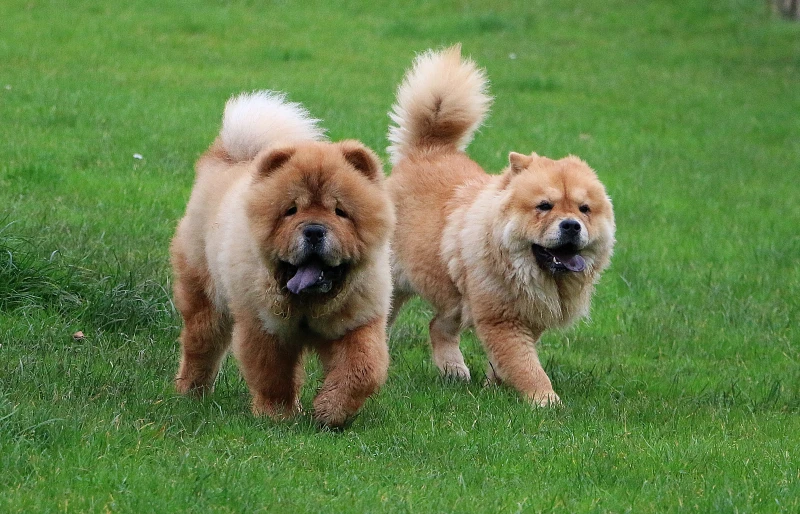
Once your dogs nail their individual training, you can bring them together to train each pet in the other’s presence. Practicing this will help both dogs understand that you are not directing all cues at them.
They’ll see patterns indicating who you’re talking to and learn that giving one dog attention doesn’t mean you’re ignoring the other. At the same time, they can learn through observation in a “do as I do” training approach.
To train two dogs together, have one go to their place, like a mat or dog bed. As you train the other dog, focus on both to ensure the non-training dog stays in their place. Initially, you’ll likely give the non-training dog more attention to keep them still, so start with simple commands, like “sit” or “down,” for the one you are training.
Reward the non-training dog with treats as they sit patiently and calmly in place, and issue quick corrections if they get up. As they practice, you can eventually shift your focus to the training dog, giving them more complex tasks while rewarding the non-training dog on occasion for being good and waiting. After several minutes of training, have your dogs switch places.
6. Get Help
As you transition to training your two dogs at once, another hand can make an enormous difference. Ask a friend or family member for help. They can hold one dog on a leash to teach restraint as you train the other dog or help keep the non-training dog focused.
As you pay attention to training your other dog, your helper can reward and correct the dog needing to stay in their place.

Should You Train Two Distinct Marker Words?
Rewarding your dogs at the proper moment with clicks and marker words gets confusing and counterproductive when you can’t clearly define who is hearing it. As a result, you may consider using two distinct marker words. “Good” could be for one dog, and you could use “yes” for the other.
While this can make it easier in some regards, it isn’t strictly necessary. Plus, it can get complicated. When you’re training both dogs, it’s easy to get the markers twisted, giving one to the wrong dog and subsequently confusing its meaning. You can use two markers, but you’ll have to be careful in how and when you say them.
Alternatively, you can use the same marker word and wrap the dog’s name around it, such as “Joey, yes, Joey.” When you say your dog’s name and direct your visual and bodily attention toward them, your pets can determine who is getting the reward.
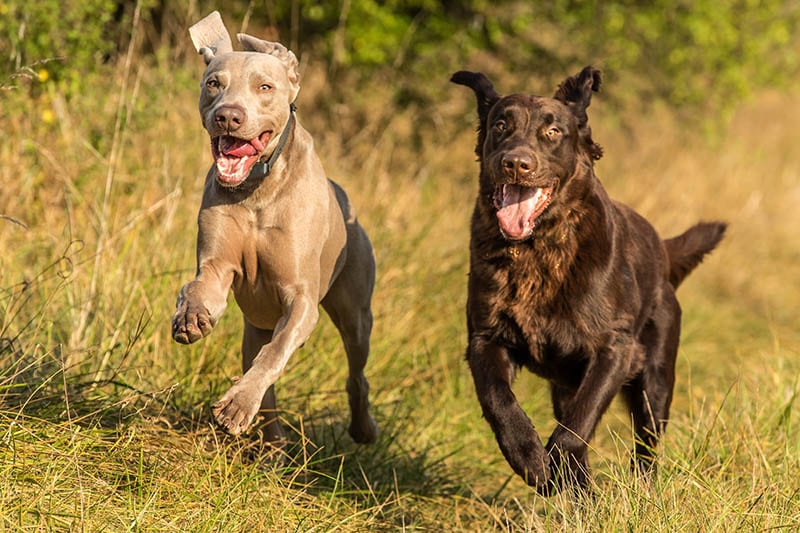
What Other Challenges Are There When Training Two Dogs At Once?
If we are dealing with puppies or two dogs that have entered the household at the same time, they will be working out their hierarchy with each other, as well as their place in the home. This will usually mean some squabbling, wrestling, and even some fights. If these tussles don’t get out of control, you should allow them to play out. If they don’t sort out their relationship early on, it will be a continued source of conflict going forward.
Once they have established a hierarchy, it is also important that you respect it. It is easy for us to feel sorry for the ‘underdog’ and want to make it up to them with preferential treatment, but this is the worst thing to do, as it will lead to more conflict.
When you know who the ‘top dog’ is, you should always feed them, greet them, and train them first. It might seem mean, but it will actually create a less stressful environment.

Final Thoughts
One of the most demanding parts of training two dogs at once or in a multi-dog household is ensuring both receive adequate and individual attention. Though the process can be challenging, you must monitor how you divide your time and make sure each dog gets enough time to learn.
Training two dogs can be extremely challenging, but very rewarding once you find yourself with two well-behaved canines. Spend your time equitably and offer a patient, positive attitude, and you’ll strengthen your bonds while establishing a cohesive group dynamic with minimal fuss.
Featured Image Credit: Olga Ovcharenko, Shutterstock






